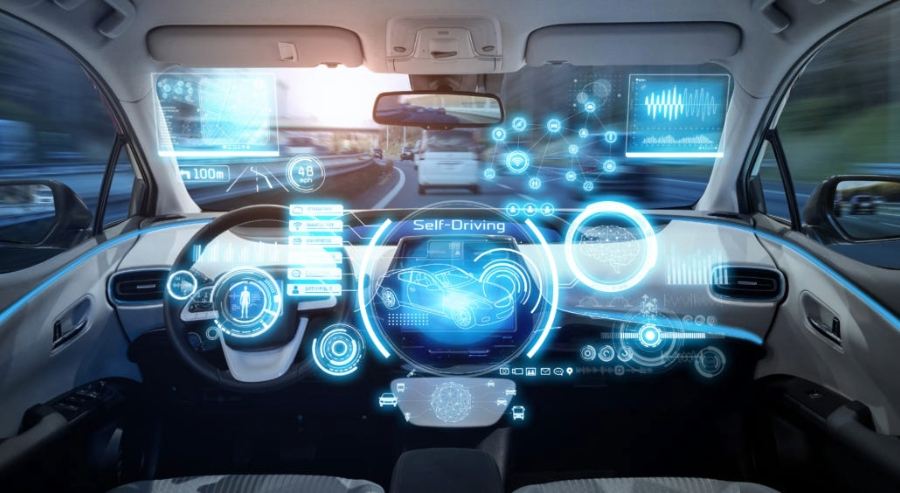Transforming Transportation: The Synergy of AI and Safety in Autonomous Driving
In the dynamic landscape of transportation, a groundbreaking era is emerging, where the intersection of machine learning and safety is reshaping the way self-driving cars navigate intricate urban environments. This marks a pivotal moment where autonomous vehicles can seamlessly adapt to evolving surroundings without compromising safety. In recent years, the integration of artificial intelligence (AI) and machine learning has propelled self-driving cars toward advanced operational capabilities. These vehicles are now equipped to analyze vast datasets through sensors, comprehend complex environments, and effectively adhere to traffic norms. Yet, the transition from controlled environments to the unpredictable reality of city streets poses challenges, heightening the risk of accidents.
In a significant stride within the domain of autonomous vehicle technology, the NYU Tandon School of Engineering has unveiled the Neurosymbolic Meta-Reinforcement Lookahead Learning (NUMERLA) algorithm. NUMERLA represents an innovation poised to revolutionize the adaptability and functionality of self-driving cars in the complexities of real-world traffic. Serving as a beacon of hope, this algorithm addresses the persistent issues of unpredictability and safety in real-world scenarios.
NUMERLA leverages real-time safety constraint updates, empowering self-driving vehicles to navigate unforeseen scenarios while steadfastly upholding safety protocols. In its framework, a self-driving car, when confronted with a changing environment, refines its understanding through collected observations, anticipates future performance, establishes safety constraints, and updates its knowledge repository. The approach hinges on lookahead optimization fused with safety parameters, resulting in an empirically secure, albeit suboptimal, online control strategy. This enables the vehicle to adapt swiftly to new circumstances without compromising safety.
The efficacy of the NUMERLA algorithm was validated in simulations within a digital platform emulating urban setups. In this controlled environment, the algorithm demonstrated superior performance in managing unpredictable scenarios, such as jaywalkers, surpassing existing algorithms. This breakthrough not only bridges the gap between adaptability and safety but also augurs well for the widespread adoption of autonomous driving technology.
The transportation industry stands at the forefront of a technological shift as autonomous vehicles reshape the way we perceive and engage with transportation. Operating without human input, these vehicles rely on advanced technologies like artificial intelligence and sensors to navigate roads and highways. The integration of AI technology in autonomous driving is a cornerstone in creating a safer and more sustainable future for the transportation industry.
The Evolution of AI in Autonomous Driving
The trajectory of autonomous vehicles has undergone various stages of development, progressing from Level 0, where there is no involvement of AI technology, to Level 5, where the AI system can drive independently even in unrestricted areas and dynamic weather conditions. As we move toward full automation, the advantages of self-driving cars become increasingly apparent.
- No Automation: At this nascent stage, there is no involvement of AI technology in the vehicle, and the driver assumes full responsibility for controlling the vehicle using their own driving skills and senses.
- Driver Assistance: In the driver assistance stage, the autonomous vehicle system can assist the driver with aspects like speed and steering, but ultimate control remains with the human driver. Common features at this stage include Active Cruise Control (ACC) and Parking Sensors.
- Partial Automation: Advancing to partial automation, the system offers an increased number of assisted features. The Advanced Driver Assistance System (ADAS) installed in vehicles helps avoid possible collisions by controlling the steering and braking system. However, humans remain in control and are responsible for staying aware of their surroundings.
- Conditional Automation: Moving to conditional automation, the AI of self-driving cars takes over the car control system, although human drivers can still intervene and respond if necessary.
- High Automation: At the high automation stage, the system can keep the vehicle safe even if humans fail to intervene. AI autonomous vehicles take control of the steering wheel, speed, and environment monitoring.
- Full Automation: Reaching the pinnacle, full automation heralds the era of driverless cars. The AI system of the car can drive independently even in unrestricted areas and dynamic weather conditions. The automated driving system continually scans the environment, ensuring safer rides.
This evolution in automation levels signifies a trajectory where AI progressively assumes greater control, offering enhanced safety, efficiency, and convenience in transportation. Each stage brings us closer to a future where self-driving cars become an integral part of our daily lives.
The Integration of NUMERLA Algorithm and Autonomous Driving
The introduction of the NUMERLA algorithm marks a monumental leap in the pursuit of safer and more adaptable autonomous vehicles. The algorithm’s incorporation of real-time safety constraint updates addresses a longstanding challenge in self-driving cars—their ability to navigate unpredictable real-world scenarios.
NUMERLA’s framework enables self-driving cars to fine-tune their understanding of their environment in response to changing conditions. This adaptability is achieved through a continuous process of observation, anticipation, and the establishment of safety constraints for future scenarios. The algorithm’s reliance on lookahead optimization, coupled with safety parameters, results in an empirically secure online control strategy. This strategy enables self-driving cars to adjust rapidly to new circumstances, ensuring a high level of safety without compromising efficiency.
A crucial aspect of NUMERLA is its ability to function within a simulated environment replicating urban setups. During such simulations, the algorithm demonstrated superior performance in managing unpredictable scenarios, such as jaywalkers, compared to existing algorithms. This proof of efficacy in a controlled digital environment instills confidence in the algorithm’s potential to address real-world challenges on the road.
The algorithm’s real-time safety constraint updates set the stage for self-driving cars to navigate unanticipated scenarios confidently. This capability is crucial for the successful integration of autonomous vehicles into the complex and dynamic environments of urban landscapes. NUMERLA emerges as a beacon of hope, showcasing the possibilities of machine learning to enhance safety and adaptability in autonomous driving.
Source

